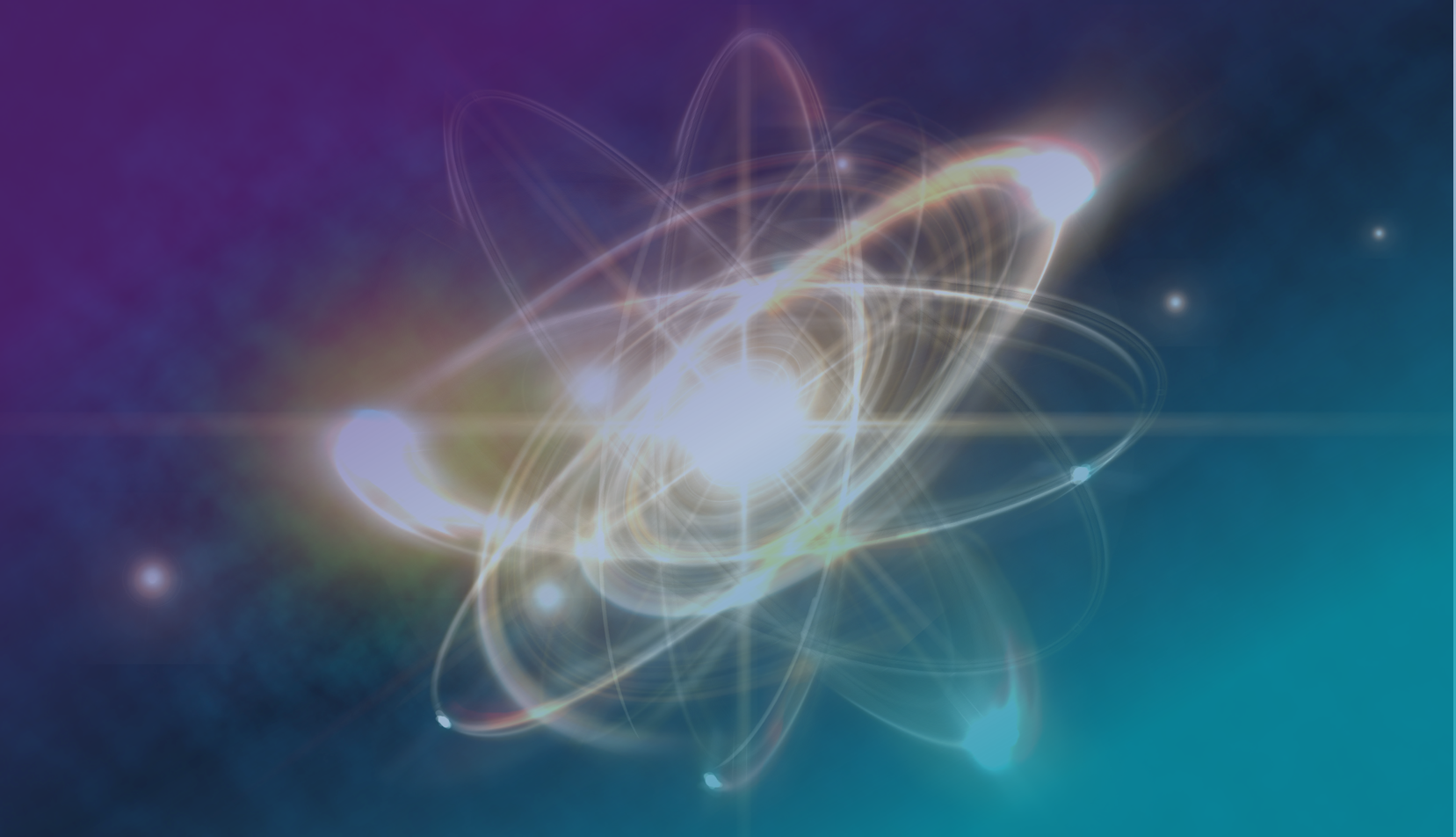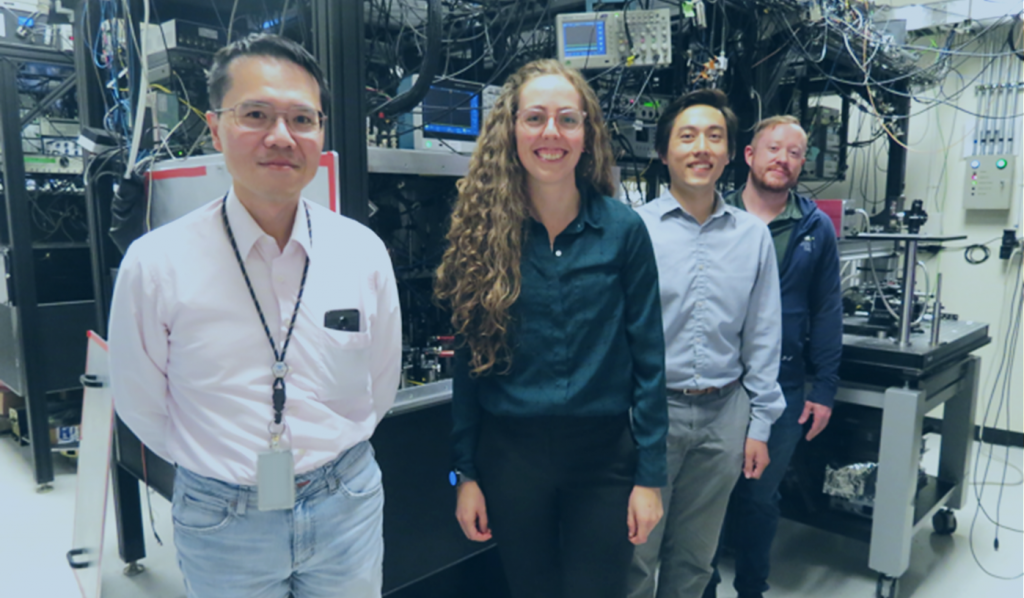
About
Neutral atoms in optical dipole traps are a promising platform for quantum computing. With this neutral atom platform, large arrays of optically accessible atoms are possible, and the apparatus functions at room temperature, setting it apart from other options. It is a rapidly progressing platform, with different species being investigated, larger arrays demonstrated each year, and quantum theory work driving different approaches.
The team at Sandia is focused on finding novel solutions to pressing problems. In collaboration with theorists at the University of New Mexico and Sandia, we are working to improve quantum gates and explore the unique possibilities of the platform.

Key Capabilities
Improving Quantum Gates
In collaboration with the quantum theory team at UNM led by Ivan Deutsch, we are working to improve the fidelity of quantum gates. Our single-photon Rydberg excitation scheme in cesium offers some distinct possibilities when compared to other schemes.
Improving Detection
Our recent low-loss, high-fidelity state detection results improve the quantum computing platform in both technical and practical ways. In addition to implementing these gains in quantum gate operations, we are working on improving and speeding up the detection of arrays of atoms.
Waveguide Integration
Working with collaborators at Sandia, we are studying the performance of waveguides at our wavelengths of interest, in order to shrink tables of optics with acousto-optic modulators, etc. into a few chips. This will be an important step toward the quantum computing of the future.
While most atomic sensors are “quantum” in some sense, the distinct properties of special quantum states can be used to enhance measurement. As laid out in the well-known paper by Degen et al., quantum sensors can be divided into three categories (Degen 2017):
- "Use of a quantum object to measure a physical quantity (classical or quantum). The quantum object is characterized by quantized energy levels. Specific examples include electronic, magnetic or vibrational states of superconducting or spin qubits, neutral atoms, or trapped ions.
- Use of quantum coherence (i.e., wavelike spatial or temporal superposition states) to measure a physical quantity.
- Use of quantum entanglement to improve the sensitivity or precision of a measurement, beyond what is possible classically."
We are interested in further exploring this third category of sensor, such as in an entangled atom interferometer. For more details see Brif et al. (2020) https://doi.org/10.1103/PRXQuantum.1.010306
Publications
Chow, Matthew NH, Bethany J. Little, and Yuan-Yu Jau. "High-Fidelity, Low-Loss State Detection of Alkali-Metal Atoms in Optical Tweezer Traps." Phys. Rev. A 108, 032407 – Published 7 September 2023. https://journals.aps.org/pra/abstract/10.1103/PhysRevA.108.032407
Martin, Michael J., Yuan-Yu Jau, Jongmin Lee, Anupam Mitra, Ivan H. Deutsch, and Grant W. Biedermann. "AM {\o} lmer-S {\o} rensen Gate with Rydberg-Dressed Atoms." arXiv preprint arXiv:2111.14677 (2021). https://doi.org/10.48550/arXiv.2111.14677
Brif, Constantin, Brandon P. Ruzic, and Grant W. Biedermann. "Characterization of errors in interferometry with entangled atoms." PRX Quantum 1, no. 1 (2020): 010306. https://doi.org/10.1103/PRXQuantum.1.010306
Lee, Jongmin, Michael J. Martin, Yuan-Yu Jau, Tyler Keating, Ivan H. Deutsch, and Grant W. Biedermann. "Demonstration of the Jaynes-Cummings ladder with Rydberg-dressed atoms." Physical Review A 95, no. 4 (2017): 041801. https://doi.org/10.1103/PhysRevA.95.041801
Jau, Y-Y., A. M. Hankin, Tyler Keating, Ivan H. Deutsch, and G. W. Biedermann. "Entangling atomic spins with a Rydberg-dressed spin-flip blockade." Nature Physics 12, no. 1 (2016): 71-74. https://doi.org/10.1038/nphys3487
Keating, Tyler, Robert L. Cook, Aaron M. Hankin, Yuan-Yu Jau, Grant W. Biedermann, and Ivan H. Deutsch. "Robust quantum logic in neutral atoms via adiabatic Rydberg dressing." Physical Review A 91, no. 1 (2015): 012337. https://doi.org/10.1103/PhysRevA.91.012337
Others News and Highlights
- Welcome new Post-Doc Coleman Cariker to our group!
March 2023
Coleman completed his doctoral work at the University of Central Florida - March Meeting 2023
Listen to Matthew Chow’s talk in G67.3! https://march.aps.org/sessions/G67/3 - DAMOP 2022
Listen to Matthew Chow’s talk in S10.00007! https://meetings.aps.org/Meeting/DAMOP22/Session/S10.7